Jan 27, 2017 | Demography
By Anne Goujon, IIASA World Population Program
Less than 6% of the working age population has a post-secondary education in sub-Saharan Africa, according to the Wittgenstein Centre Data Explorer. However, there is a huge diversity of experiences in the region: those countries located in Southern and Western Africa have higher shares of highly educated people compared to those in Eastern and Middle Africa.
The potential for increasing education levels is tremendous as there is a huge demand for higher education, partly driven by rapid population growth. The population in the age of attending higher education—18–23 years—is forecasted to increase by 50% from its 2015 level (110 million) by 2035 (183 million), and will have doubled by 2050 to 235 million. The number of colleges and universities in the region has been burgeoning to fulfill the demand. Those are not always of very good quality, whether they are in the public sector or the private, as most are. While regulatory bodies exist to check whether all education providers meet national and international standards, they are not universal.
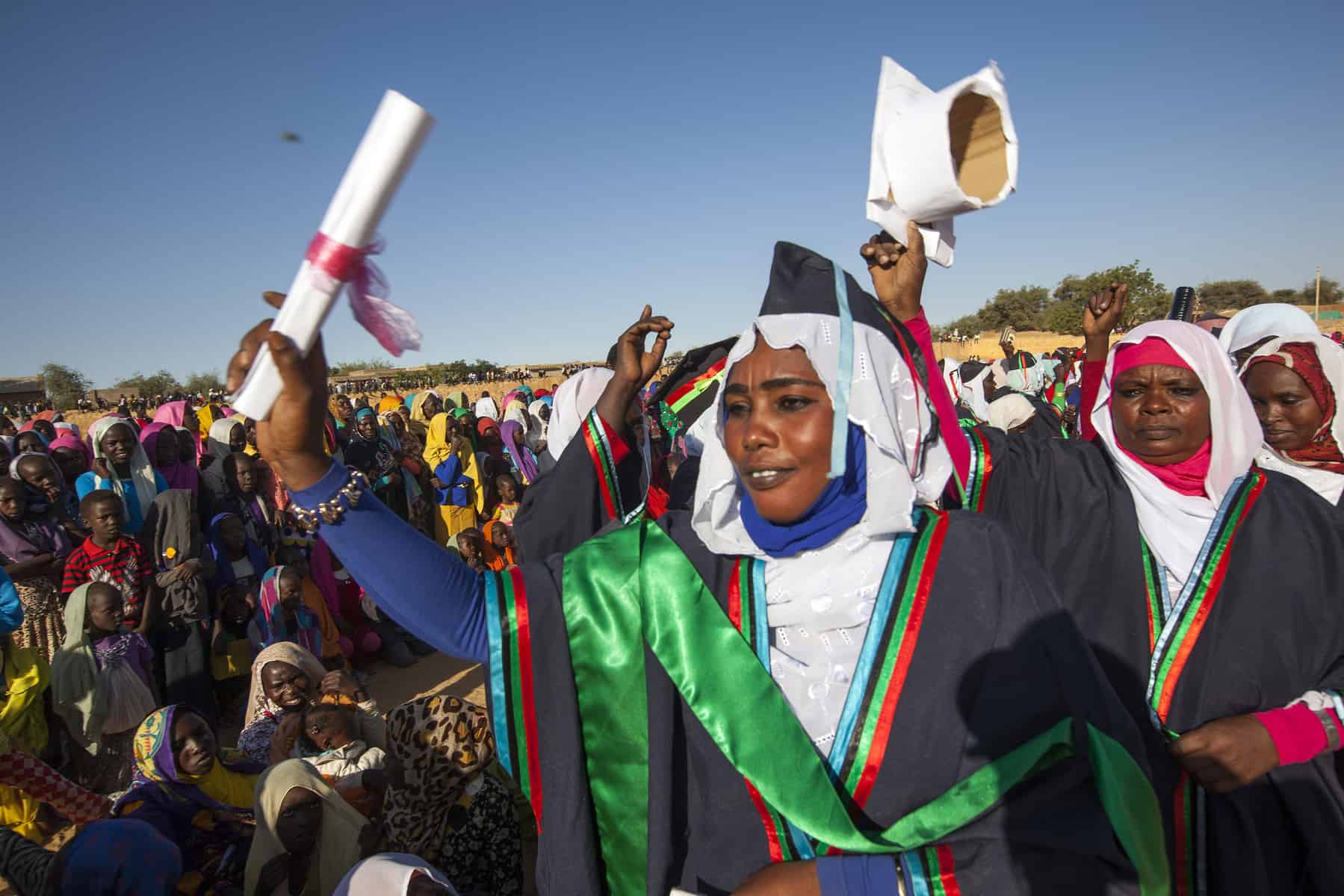
A 2015 graduation ceremony for the Open University of Sudan. ©Hamid Abdulsalam, UNAMID via Flickr
The expansion of higher education has led to substantial brain drain to Europe, North America, and Australia, because highly educated find better opportunities there for studying and jobs–and better salaries. Researchers have estimated that in some countries such as Eritrea, Ghana, Kenya, Sierra Leone, Somalia, and Uganda, more than a third of the national high-skilled labor force had migrated to OECD countries in 2000. While remittances that these people send home help compensate and reinforce the education in their countries of origin, they do not compensate for the departed skills and knowledge.
These facts about education in sub-Saharan Africa are well-known to education professionals and researchers in the field. But as we show in a new book Higher Education in Africa: Challenges for Development, Mobility and Cooperation, published in January 2017, there are a lot of other aspects of education in the region that are not so well-known and that could provide interesting avenues for further research.
For instance, you probably did not know that the African Union has a higher education harmonization strategy. The general idea is the same as the Bologna process in Europe: enhance the mobility of students by making higher education systems more compatible and by strengthening the quality assurance mechanisms. One chapter by Emnet Tadesse Woldegiorgis, which looks at the process of harmonization of higher education in Sub-Saharan Africa, shows that it follows in the footsteps of the Bologna process mostly because of the involvement of international donors and of the strong links between African universities and European ones.
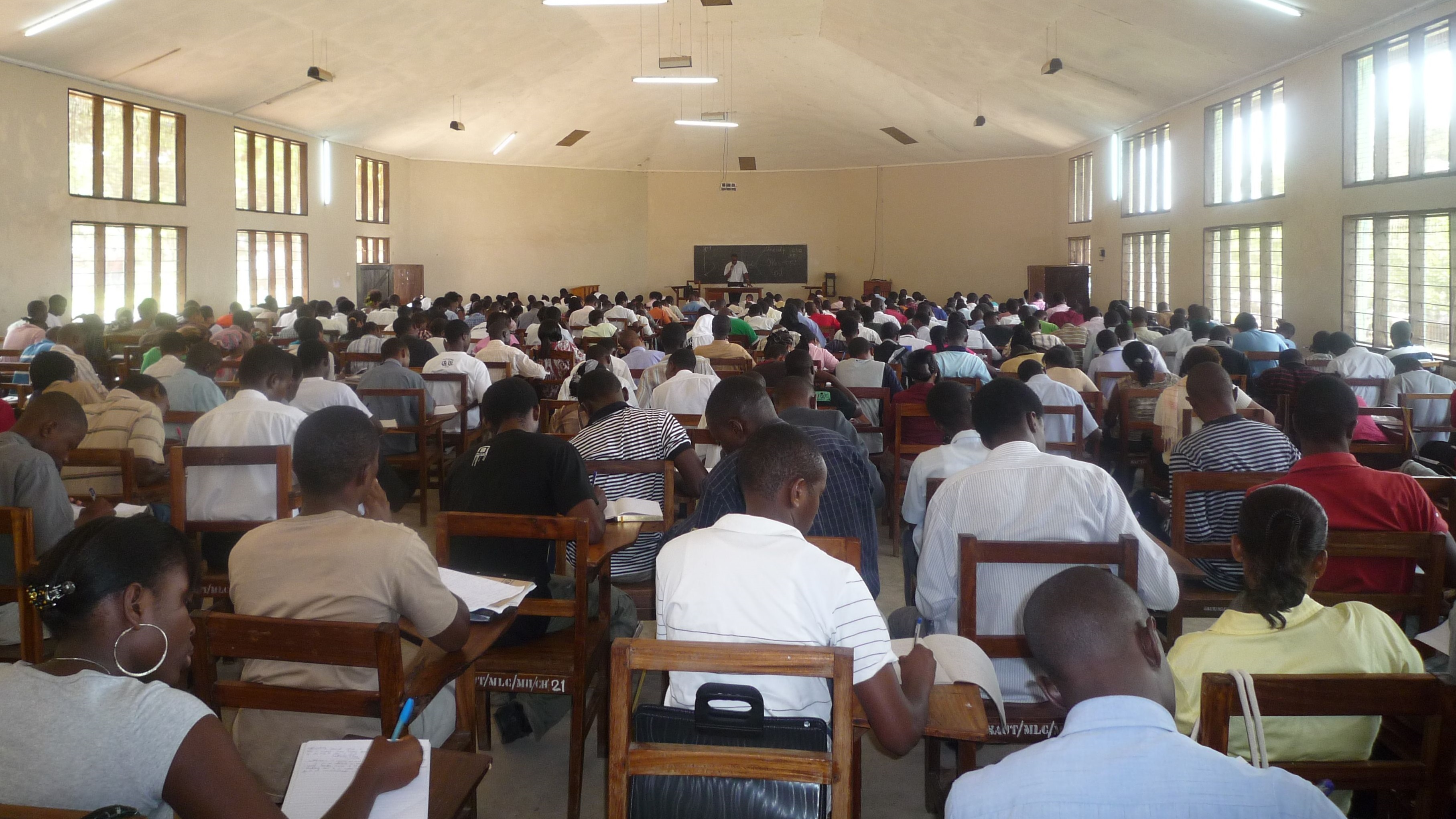
Students in lecture room at St. Augustine University of Tanzania © Max Haller and Bernadette Mueller Kmet 2009
Many chapters of the book look at the mobility of more highly educated people between Europe and sub-Saharan Africa. This is the case of a chapter by Julia Boger who interviewed graduates from Germany returning to their countries of origin: Ghana and Cameroon. The experiences of those graduates from the two West African countries are radically different: because mainly of their networks, the Ghanaian graduates face less difficulties in finding a job upon return to their country than the Cameroonians.
The last part of the book looks at some cooperation programs that are in place between the North and South (also between the South and the South). Lorenz Probst and colleagues, in their chapter, report about the challenges in implementing a transdisciplinary course in Africa within the context of the rather compartmentalized sectors of higher education in Africa.
The development of higher education could push forward change and innovation, just as much as capacity building in sub-Saharan Africa where it is direly needed.
 Reference
Reference
Goujon, Anne, Max Haller, and Bernadette Müller Kmet. 2017. Higher Education in Africa: Challenges for Development, Mobility and Cooperation. Newcastle upon Tyne, UK: Cambridge Scholars Publishing.
Note: This article gives the views of the author, and not the position of the Nexus blog, nor of the International Institute for Applied Systems Analysis.
Oct 6, 2016 | Alumni, Systems Analysis
Chibulu Luo, PhD Student in the Department of Civil Engineering at the University of Toronto, and a 2016 participant in the IIASA Young Scientists Summer Program
We cannot think about sustainable development without having a clear agenda for cities. So, for the first time, the world has agreed – under the UN’s Sustainable Development Goals (SDGs) and the New Urban Agenda – to promote more sustainable, resilient, and inclusive cities. Achieving this ambitious target is highly relevant in the context of African cities, where most future urban growth will occur. But it is also a major challenge.
Of the projected 2.4 billion people expected to be added to the global urban population between now and 2050, over half (1.3 billion) will be in Africa. The continent’s urban communities will experience dramatic shifts in living and place significant pressure on built infrastructure and supporting ecosystem services. As many cities are yet to be fully developed, newly built infrastructure (estimated to cost an additional US$30 to $100 billion per year) will impact their urban form (i.e. the configuration of buildings and open spaces) and future land use.
In order to realize the SDGs, African cities, in particular, need an ecosystem-based spatial approach to urban planning that recognizes the role of nature and communities in enabling a more resilient urban form. In this regard, more comprehensive understanding of the dynamics between urban form and the social and ecological aspects of cities is critical.
Unfortunately, research to investigate these relationships in the context of African cities has been limited. That’s why, as a Young Scientist at IIASA, I sought to address these research priorities, by asking the following questions: What is the relationship between urban form and the social and ecological aspects of African cities? How has form been changing over time and what are the exhibiting emergent properties? And what factors are hindering a transition towards a more resilient urban form?
Fundamentally, my research approach applies a social-ecological system (SES) lens to investigate these dynamics, where resilience is defined as the capacity of urban form to cope under conditions of change and uncertainty, to be able to recover from shocks and stresses, and to retain basic function. At the same time, resilience is characterized by the interplay between the physical, social, and ecological performance of cities.
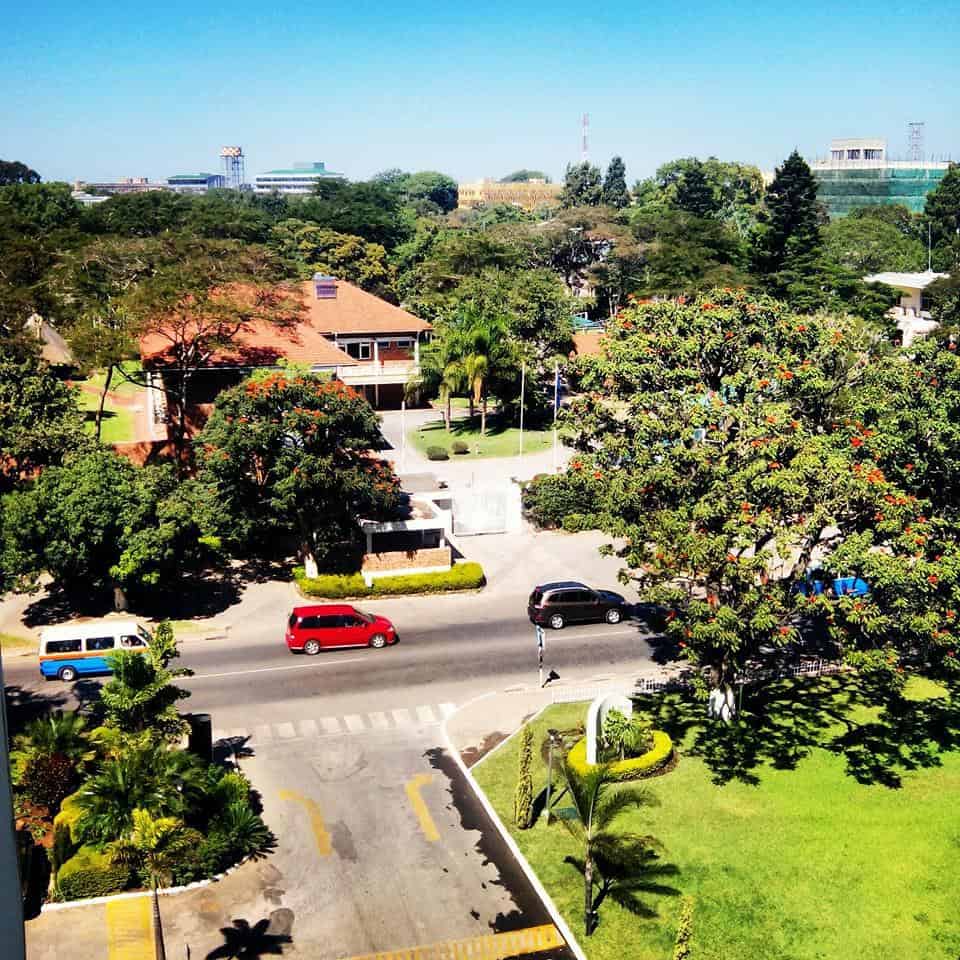
Resilient urban forms are spatially designed to support social and ecological diversity, such as preserving and managing urban greenery
Photo Credit: Image of Lusaka, Zambia, posted on #BeautifulLusaka Facebook Page
Currently, Africa’s urbanization is largely unplanned. Urban expansion has led to the destruction of natural resources and increased levels of pollution and related diseases. These challenges are further compounded by inadequate master plans – which often date back to the colonial era in many countries – and capacity to ensure equitable access to basic services, particularly for the poorest dwellers. Consequently, over 70% of people in urban areas live in informal settlements or slums.
My summer research focused on the specific case of Dar es Salaam, Tanzania, and Lusaka, Zambia – two cities with very different forms, and social and ecological settings. I used the SES approach to develop a more holistic understanding of the local dynamics in these cities and emerging patterns of growth. My findings show that urbanization has resulted in high rates of sprawl and slum growth, as well as reductions in green space and increasing built-up area. This has ultimately increased vulnerabilities to climate-related impacts such as flooding.
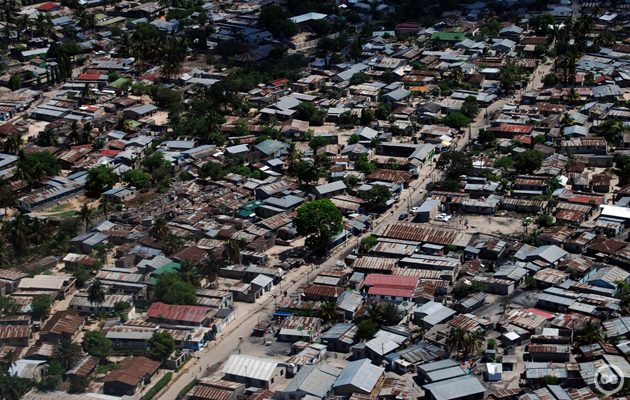
Densely built slum in Dar es Salaam due to unplanned urban development
Photo Credit: tcktcktck.org
Using satellite images in Google Earth Engine, I also mapped land cover and urban forms in both cities in 2005 and 2015 respectively, and quantitatively assessed changes during the 10-year period. Major changes such as the rapid densification of slum areas are considered to be emergent properties of the complex dynamics ascribed by the SES framework. Also, urban communities are playing a significant role in shaping the form of cities in an informal manner, and are not often engaged in the planning process.
Approaches to address these challenges have been varied. On the one hand, initiatives such as the Future Resilience for African Cities and Lands (FRACTAL) project in Lusaka are working to address urban climate vulnerabilities and risks in cities, and integrate this scientific knowledge into decision-making processes. One the other hand, international property developers and firms are offering “new visions for African cities” based on common ideas of “smart” or “eco“ cities. However, these visions are often incongruous with local contexts, and grounded on limited understanding of the underlying local dynamics shaping cities.
My research offers starting point to frame the understanding of these complex dynamics, and ultimately support more realistic approaches to urban planning and governance on the continent.
References
Cobbinah, P. B., & Darkwah, R. M. (2016). African Urbanism: the Geography of Urban Greenery. Urban Forum.
IPCC (b). (2014). Working Group II, Chapter 22: Africa. IPCC.
LSE Cities. (2013). Evolving Cities: Exploring the relations between urban form resilience and the governance of urban form. London School of Economics and Political Science.
OECD. (2016). African Economic Outlook 2016 Sustainable Cities and Structural Transformation. OECD.
The Global Urbanist. (2013, November 26). Who will plan Africa’s cities? Changing the way urban planning is taught in African universities.
UNDESA. (2015). Global Urbanization Prospects (Key Findings).
Watson, V. (2013). African urban fantasies: dreams or nightmares. Environment & Urbanization.
Note: This article gives the views of the author, and not the position of the Nexus blog, nor of the International Institute for Applied Systems Analysis.
Sep 21, 2016 | Demography
By Raya Muttarak, IIASA World Population Program
Taking action on climate change is one top priority of the Sustainable Development Goals (SDGs), especially since its adverse impacts can undermine sustainable development. At the same time, reducing gender inequalities and empowering women and girls is fundamental in making progress across all the goals.
These two issues are also closely linked: in certain circumstances, women are more vulnerable to the effects of climate change than men, for example, due to weaker physical ability, lower socioeconomic status, and greater social, economic and political barriers in coping capacity.
This is why, in recent work, we have been exploring the differential impacts of climate change on subgroups of population such as by gender, age, education, and income. The rising number of households headed by women across the world and, in particular, in southern Africa calls for special attention to their economic welfare. In general female-headed households are more likely to be in poverty. Under the context of the changing climate, it is likely that weather extremes, rainfall variability, and natural disasters associated with climate change will exacerbate economic disadvantages of female-headed households.
Female-headed households are more economically vulnerable to climate-related shocks for three big reasons, which researchers call a “triple burden”. First, persistent gender disparities in the labor market and other productive activities, including limited access to formal credit markets and land contribute to greater economic disadvantage for female-headed households. Second, these households often have a higher total dependency ratio–that is, women take care of a higher proportion of dependent children and the elderly. Third, women who are heads of households with no other adult help have a “double day burden” where they have to fulfil both domestic duties and make money outside the home. That means that female heads face greater time and mobility constraints and may have to work fewer hours or choose lower-paying jobs.
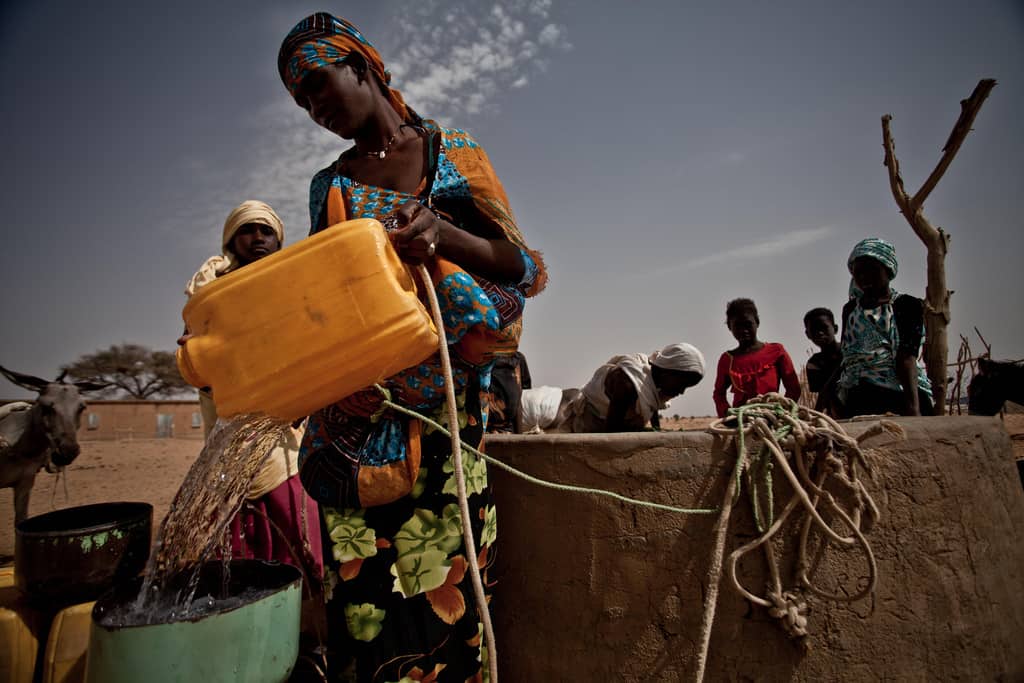
Female-headed households are more economically vulnerable to climate-related shocks for three big reasons, which researchers call a “triple burden”.
Photo: Pablo Tosco/Oxfam
Add climatic shocks to an already disadvantaged family, and the livelihood disruption can be a catastrophe. However, there have been very few studies of how female-headed households actually fare in the context of climate change. In our new study published in World Development, we used household survey data from South Africa and local rainfall data over the period 2006-2012 to examine how female-headed households fare economically when facing variation in rainfall. The study provides new empirical evidence on economic welfare of households headed by women following climatic shocks.
The new and unique part of our study is that we are able to control for observed and unobserved characteristics of households using a statistical technique called fixed effects estimation, which enables us to control for the household-specific effects on income. It also lets us account for different income trajectories in households with different demographic compositions. Furthermore, we were able to evaluate the impacts of income shock on economic vulnerability of female-headed households using rainfall variability as an exogenous source of risk. Income loss due to other variables such as death of a household member or losing a job are likely to be endogenously determined by household characteristics, that is, female heads have lower level of education and hence are more likely to fall into unemployment. But because rainfall variation is not connected to household factors, we were able to measure the causal effect of climate variability on incomes, comparing different household types.
Our study shows that female-headed households in South Africa are indeed more vulnerable to climate variability than households headed by two adults, and not just because of the greater economic disadvantages that they start with. Even after controlling for household socioeconomic characteristics, female heads still fare worse when facing economic shocks. This might be due to limited access to family support and protective social networks who can step in to help in time of crisis.
Our analysis also reveals that not all types of female-headed households are vulnerable to rainfall variability. This finding is especially important for designing a policy to reduce vulnerability of female-headed households. Given different routes into female headship, we show that never-married female heads, women with a non-resident spouse (for example, where the husband has moved to work in another region), and widows have greater economic vulnerability to climate variability. The group of female-headed households where the female head has never been married is the largest of these groups. Households with adults of both genders where the female works but the male does not work and households of separated or divorced women are no more vulnerable than male-headed households.
We also found that vulnerability to climate impacts is related to the effect of rainfall on agriculture. We find that female-headed households face greater economic vulnerability only in the districts where rainfall has a large effect on loss in agricultural yields. Regardless of household engagement in agriculture, crop losses in a district can affect food and livelihood security through surges in food prices and shortfalls in local demand.
Although our study focuses on South Africa, the results showing that female-headed households are more vulnerable to climate variability call for particular interventions to their vulnerability in the context of climate change. The number of female-headed households is rising, with an exceptionally high proportion in southern African countries (36.3% in Lesotho (2006), 43.9% in Namibia (2013), 47.9% in Swaziland (2007). As climate variation and extremes also increase, policies to reduce vulnerability to climate change need to explicitly consider the plight of this subgroup of population.
References
Flatø, M., Muttarak, R., & Pelser, A. (2016). Women, weather, and woes: The triangular dynamics of female-headed households, economic vulnerability, and climate variability in South Africa. World Development. doi:10.1016/j.worlddev.2016.08.015
Muttarak, R., Lutz, W., & Jiang, L. (2015). What can demographers contribute to the study of vulnerability? Vienna Yearbook of Population Research, 13, 1–13. doi:10.1553/populationyearbook2015s001
Rosenhouse, S. (1989). Identifying the poor : is “headship” a useful concept? (No. LSM58) (pp. 1–62). Washington, DC: The World Bank. http://documents.worldbank.org/curated/en/1989/07/442370/identifying-poor-headship-useful-concept. Accessed 24 February 2015
Note: This article gives the views of the author, and not the position of the Nexus blog, nor of the International Institute for Applied Systems Analysis.
Nov 10, 2015 | Demography, Young Scientists
By Anne Goujon, IIASA World Population Program
If you live in South Africa and did not complete high school then your chances of committing crime, being caught, and sent to jail are pretty high. This is what we can tell from comparing the education characteristics of the population of inmates in South Africa with that of the population who was not in jail. A recent study that I conducted with a team of African and European researchers in the framework of the Southern African Young Scientists Summer Program confirms some findings from previous research, such as this 2010 study that found that education has a statistically significant effect on crime.
South Africa spends about 8 billion dollars a year on public order and safety. Violence and related injuries are the second primary cause of death in South Africa, and in the last 10 years, the prison population rate has been in a range from 300 to 400 per 100,000 people, one of the highest rates in the world.

© straystone | Dollar Photo Club
South Africa is still plagued with the after-effects of its apartheid history, which enforced sub-standard education for different racial groups, creating a polarized society. The disparity in education between white and other racial clusters actually widened after the fall of the apartheid government. At the same time—and not unrelatedly, as shown by our study—the apparently peaceful transition to a democratic regime was accompanied by a rise of crime and violence, a gauge of the dichotomized South African society and its high levels of social exclusion and marginalization.
Indeed, our analysis of the 2001 census shows that the effect of education on criminal engagement – meaning in this study actually serving time in prison for a crime – differs by race. This suggests that there is an interaction effect between race and education. The negative relationship between being highly educated and the likelihood of being incarcerated is linear for respondents of mixed ethnic origin (or “colored” according to the South African classification), Indians, and to a lesser extent also for Africans. For white respondents, however, the effect of education creates a bell-shaped graph, with the richest and poorest people less likely to be in prison, and the medium levels of education associated with the highest probability to be in prison.

Share of the general and inmate population by level of educational attainment, South Africa, 2001
We also looked at the empirical results from a sample drawn in the Free State province—a crime hot spot – which indicated that a person’s native language, a proxy for race and place of origin, has a statistically significant influence on the likelihood to commit a contact . We also found that the probability of committing contact crimes, including vandalism, threat, assault, and injury, decreased with years of education, while the likelihood of committing economic crimes, including tax fraud, increases with years of education
This research provides another good incentive to invest in education in South Africa, and particularly to insist on all children completing upper secondary education finishing with grade 12. Education statistically significantly decreases the probability of engaging in criminal activity. Hence, it should be included in the National Crime Prevention Strategy, particularly in some targeted provinces within South Africa.
Reference
Jonck, Petronella, Anne Goujon, Maria Rita Testa, John Kandala, 2015, Education and crime engagement in South Africa: A national and provincial perspective. International Journal of Educational Development, 45: 141–151. doi:10.1016/j.ijedudev.2015.10.002. http://www.sciencedirect.com/science/article/pii/S0738059315001248
Note: This article gives the views of the author, and not the position of the Nexus blog, nor of the International Institute for Applied Systems Analysis.
Oct 20, 2015 | Demography
By Samir KC, IIASA World Population Program (Originally published on the Globalist)
Africa is rising fast, at least demographically. Today, the continent is home to more than a billion people, of which some 950 million of them living in Sub-Saharan Africa.
The UN, for its part, predicts that the continent’s population will double by 2050 — and then double again by the end of this century, to make it a continent of more than 4 billion.
This staggering number – equal to the entire world population as recently as 1980 — may concern many doomsayers, but in reality it contains a lot of good news.
One main reason for the increase is that better living conditions reduce child mortality and create opportunities for longer and healthier lives.
This crucial shift results in a rapidly rising number of adults who are driving the continent’s demographic future.
That development is similar to what occurred in Asia over the last 30 years, which in turn had previously occurred in the Western world.

Barry Aliman, 24 years old, bicycles with her baby to fetch water for her family, Sorobouly village near Boromo, Burkina Faso. Photo by Ollivier Girard for Center for International Forestry Research (CIFOR).
UN’s optimistic projections
However, as Wolfgang Fengler and I highlighted recently, in contrast to the UN Population Division’s projections, it is far from certain that Africa will even reach a population totaling 3 billion, and the world 10 billion, by the end of this century.
According to our projections at the Wittgenstein Center, projecting population by age, sex, and educational attainment for almost all countries of the World, Africa’s population may only rise to some 2.6 billion by 2100. That number is only 60% of the 4.4 billion predicted by the UN.
The differences are stark across the biggest African countries. In some countries’ cases, the UN’s forecast is much higher – in fact, even more than double (e.g. Democratic Republic of the Congo, Tanzania, Niger, Angola and Mozambique, See table).

Data: UN Population Division and The Wittgenstein Center
How is it possible to have such sharp differences in population projections, which are generally known for their accuracy?
The rate of Africa’s future population growth will mostly depend on two factors. First, the number of children per woman and, second, the chance of those children to survive (which is now much higher, thanks to improving living conditions).
Decline in fertility rate
In any projection far into the future, even a small difference in the number of children per woman makes a big difference in total population numbers when its effect is viewed cumulatively over several generations.
At the core of the two vastly different forecasts is this: The UN assumes that fertility will only decline slowly to 3 children per woman by 2050 — and then 2.6 children by 2070.
These projections are based on the observation that, while fertility has stagnated in parts of Africa in the last decade, it will decline more slowly than it had been declining in other parts of the world.
In contrast, the Wittgenstein Center assumes that the patterns that we will come to observe in Africa are not going to be much different from the case in the other regions of the world, as they went through their demographic transitions.
Once countries urbanize and citizens become wealthier, fertility declines, everywhere.
The most important factor is women’s education. Already today, an Ethiopian woman with secondary education has on average only 1.6 children, compared to a woman with no education who has 6 children.
This relationship is true across Africa (see figure).

Source: Demographic and Health Surveys
Similar trend in Asia
We know that access to education is expanding across Africa. There is even talk of an education dividend.
Once all girls go to school and stay there longer, they will have fewer children, especially as they will also be exposed to a more modern lifestyle, be it through TV, the cell phone and the fact that Africa is urbanizing rapidly.
This has also been the experience in Asia. It took about 20 years in Asia for its fertility to decline from more than 5 children per woman during early 1970s to less than 3 children per woman in early 1990s.
Similarly, India took about 20 years for its fertility to decline from 4.7 children per woman in early 1980s to 3.1 by early 2000s.
With new development and the plans for the better future in the making, it won’t be a surprise if the average African family would have only three children as soon as 2035.
If that assumption bears out, then Africa cannot reach 4 billion — and the world would peak this century at below 10 billion.
Note: This article gives the views of the author, and not the position of the Nexus blog, nor of the International Institute for Applied Systems Analysis.


 Reference
Reference








You must be logged in to post a comment.